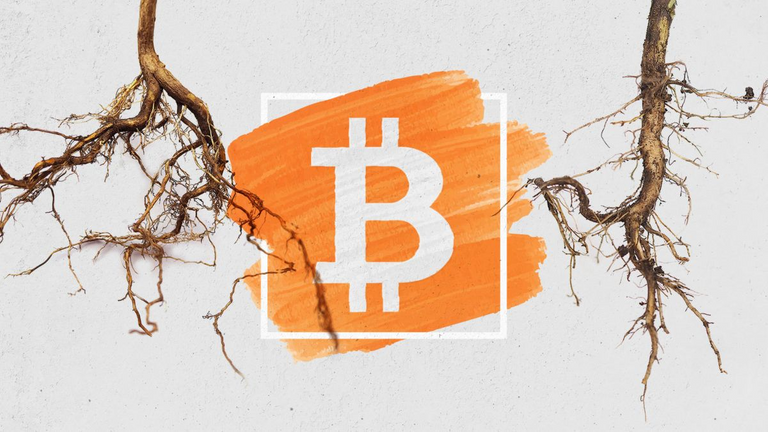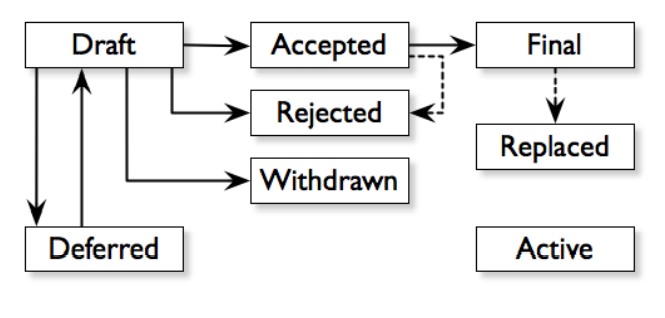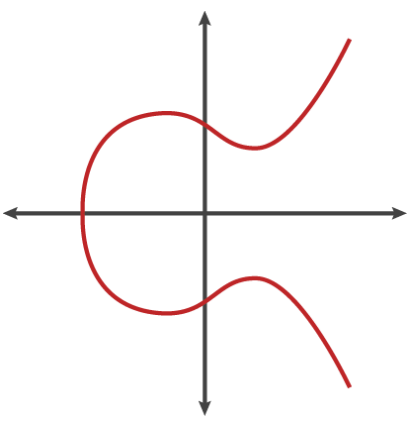Introduction to Taproot

As we all know, the Bitcoin network is decentralized, but that does not mean that Bitcoin is governed anarchically.
On the contrary, it follows a collaborative governance model.
Through proposals for improvements, the community proposes updates that are analyzed and implemented after there is a consensus among participants regarding whether or not to approve them.
of the idea. The most recent update that Bitcoin is about to face is called Taproot, which along with Schnorr signatures, is one of the most anticipated technological upgrades for Bitcoin since the launch of SegWit in 2017.
The goal is to change the way Bitcoin scripts operate to improve privacy, scalability and security - issues so important to increasing adoption. This and much more will be possible, but before we continue, we need to understand an important concept about how the process of implementing improvements in Bitcoin happens.
BITCOIN IMPROVEMENT PROPOSAL (BIP)
To develop, maintain and improve the Bitcoin network, developers propose BIPs, which are proposed for improvements, which are formally documented and suggest solutions to one or more problems. They go through a community review and discussion process before being accepted, representing the standard format for communicating ideas and reinforcing Bitcoin's decentralization.
One of the most recent examples of proposed and implemented BIP was BIP 141, better known as Segregated Witness (SegWit). It was introduced in 2015 and aimed to improve the scalability of the network by increasing the block size limit of the Bitcoin blockchain and thus enabling faster transactions and lowering fees. The proposal was successfully implemented through a soft fork that required more than 95% of the network's miners to signal for the update during a fixed period of 14 days.
What SegWit did was basically separate the information from the transaction signature and thereby allowed the block size to increase.
THERE ARE THREE TYPES OF BIPS:
- Standards Track BIPs -> Describes changes that affect most or all implementations of the network protocol, changes in transaction and block validity rules, or any changes or additions that affect Bitcoin interoperability.
- Informative BIPs -> This type of BIP focuses on general guidelines, issues design and is not to propose new features or changes important.
- Process BIPs -> It involves proposals that seek to improve the central execution processes in the Bitcoin ecosystem. They are similar to standard BIPs in that they require community consensus to be implemented.
Bitcoin improvement proposals are registered in a repository with version on GitHub.
HOW ARE BIPS VOTED?
A BIP begins as a draft, which is submitted by one or more authors. Before its presentation, a BIP is discussed for a long time in a series of email lists and specific channels. In addition, the BIP draft can be modified and altered by its authors several times, based on community feedback. Finally, the proposal is only considered finalized and activated if it reaches community consensus.

The Taproot improvement proposal is actually composed of three BIPs that define three different implementations for the Bitcoin protocol: Schnorr Signatures (BIP 340), Taproot (BIP 341) and Tapscript (BIP 342). However, they are known and collectively called the Taproot or BIP Taproot update.
Originally developed by Greg Maxwell, Peter Wuille and Andrew Poelstra and subsequently supported by ten other top contributors, Taproot is a soft fork that improves Bitcoin scripts to increase privacy and transaction efficiency, as well as providing greater flexibility for Bitcoin smart contracts . Taproot makes it possible to hide the fact that a Bitcoin script has been executed.
For example, spending Bitcoin using Taproot can make a transaction on a Lightning Network channel, a point-to-point transaction or a sophisticated smart contract indistinguishable.
Anyone who monitors one of these transactions will see nothing but a point-to-point transaction. It is important to note, however, that this does not change the fact that the portfolios of the initial sender and the final recipient are exposed.
SCHNORR SUBSCRIPTIONS (BIP 340)
Schnorr, named after its inventor, the German cryptographer and mathematician Claus-Peter Schnorr, is a digital signature protocol that has been under analysis for a long time for implementation in Bitcoin. They propose to update Bitcoin's central cryptography.
Due to their properties and mathematical rules that unite the private key, the public key and the signature, they bring several benefits to users, such as greater privacy, lower rates and more flexible multisig.
Compared to ECDSA's 33-byte public keys (Elliptical Curve Digital Signature Algorithm) - signature scheme used in Bitcoin, the public keys used for Schnorr signatures are 32 bytes long. In addition, Schnorr signatures are 64 bytes, compared to ECDSA signatures, which range from 70-72 bytes, a reduction of 12%.
This small space savings offers fee savings for Bitcoin users who adopt Taproot.
Because they are smaller and faster than ECDSA subscriptions, the Schnorr Digital Signature Scheme (SDSS) also has the added benefit of being "linear", which means that smart contracts
Schnorr-based applications can be optimized for functions that ECDSA subscriptions cannot.
Schnorr's signatures allow for the grouping of signatures through Taproot, combining several private keys into a single “master private key” that can sign transactions.
This aggregation of keys eliminates the need for multiple public keys and signatures and should reduce transaction fees and the operational cost of a node, improving scalability. The public keys and the Schnorr signature can be aggregated so that if three parties want to sign a transaction, they can confidently combine their three public keys to form a single public key. Then, using each of their three private keys, they can sign the same message.
Finally, they can combine their three signatures to form a single valid signature for the aggregated public key. A verifier should only verify a single signature and public key to make sure that all three parties have signed the message.
One of the main advantages of Schnorr signatures is that they can take multiple keys within a complex Bitcoin transaction and produce a single signature. This means that the signatures of several parties involved in the transaction can be “aggregated” into a single Schnorr signature. This is known as subscription aggregation.
ELLIPTIC CURVE DIGITAL SIGNATURE ALGORITHM (ECDSA)

Since the beginning of Bitcoin, the ECDSA, or Elliptical Curve Digital Signature Algorithm, has been used as a signature scheme.
It is open source, so there are no legal problems using it, it has been well tested, widely known and has sufficiently established security. However, ECDSA has several disadvantages that Schnorr improves, related to computational efficiency, storage and privacy.
TAPROOT (BIP 341)
While BIP 340 defines the specification for generating and encoding Schnorr signatures and public keys, BIP 341, the second part of the Schnorr / Taproot / Tapscrip proposal, defines how the Bitcoin protocol will integrate Schnorr signatures.
It extends to Schnorr's functionality to allow greater scaling, efficiency and privacy to the network, as as we know, Bitcoin is not anonymous, but pseudo-anonymous. Taproot then provides the advance of anonymity in the Bitcoin network, in addition to lowering transaction fees and several other features.
Taproot will make it possible to add two private keys together to sign the public keys respectively. It's like being able to send two emails (one written by João and the other by Maria), but condensed into one. From an operational point of view, nothing changes, because e-mails are still received; but from the point of view of the transaction, it looks like only one has been sent.
In summary, Taproot improves the privacy, efficiency and flexibility of Bitcoin's scripting capabilities, allowing developers to write complex scripts, minimizing the impact on the chain. That way, through Taproot, participants in a multisig can add their signatures and pass the transaction normally.
TAPSCRIPT (BIP 342)
The third part of the proposal, BIP 342, describes a bitcoin scripting language update that complements the Schnorr and Taproot signatures.
It improves signature hashing in script validation, introduces flexibility to enhance the capacity of smart contracts, and changes the way signatures are evaluated to take advantage of Schnorr signature efficiency improvements.
Tapscript was also designed to allow updates to be implemented more flexibly in the future.
BENEFITS OF TAPROOT IMPLEMENTATION
But just as important as understanding the technical issues involved, is understanding the advances that Taproot will bring to the Bitcoin network. Let's go to them:
Improvements related to privacy are perhaps the most important part of this update. By introducing Schnorr signatures and key aggregation, contracts with multiple signatures will no longer look different from single signatures, providing privacy for all Taproot users.
Scalability will be expanded and transactions will be significantly more economical, since scripts with a lot of data no longer need to pay high fees, but the same as a standard transaction. The more complex transactions there are on the network, the greater the efficiency gains.
Since we can perform complicated transactions using only one signature, the number of bytes used for aggregated keys and signatures is exactly the same. Therefore, there will be a reduced amount of data to be transferred and stored on the blockchain.
It will be very useful for platforms that use complex autonomous contracts, such as brokers that rely on multisignature portfolios (multisig), as it aggregates these keys into a single Schnorr subscription, possibly reducing network fees
for brokers up to 30%.More transactions per block (higher TPS rate).
Lower transaction fees.
Implementations linked to Taproot are important and bring significant improvements to Bitcoin. Such features are widely awaited by the community, as they will bring advances related to efficiency and privacy that, added to the advances of the Lightning Network, will provide scalability and even more security for the network.
They are under discussion and still have a process to go through until they are fully activated after reaching consensus among community participants, such as developers and miners.
As with previous updates, portfolios and services will need to be updated to make Taproot functional. Therefore, as new implementations are made, the positive effects on efficiency and privacy tend to make Bitcoin even more robust and valuable.
Regardless of your involvement in the Bitcoin community, the benefits of this enhancement are likely to affect your Bitcoin experience. Keep up to date with the next steps.